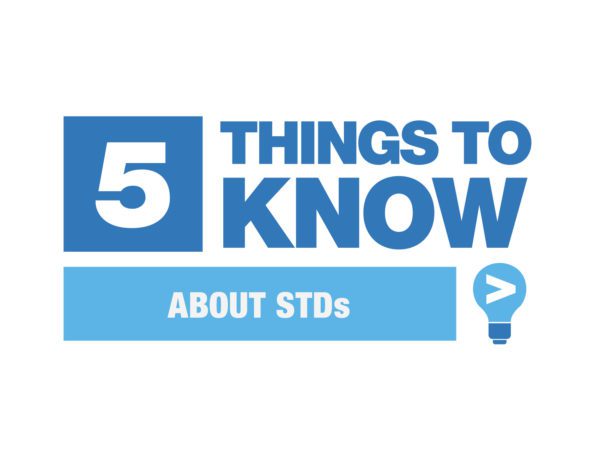Chlamydia
Chlamydia is one of the most common STDs. Many people who have chlamydia do not know it. Often there are no symptoms. Left untreated, chlamydia can cause infertility and pain in both women and men. Once diagnosed, it is easily cured with antibiotics. Doxy PEP is an option to prevent infection within 72 hours after exposure.
Find STD Testing Near You
Click on a question below to learn more about chlamydia.
- How do you get chlamydia?
- What are the symptoms of chlamydia?
- What's involved in chlamydia testing?
- How do you treat and cure chlamydia?
- What happens if chlamydia is not treated?
How do you get chlamydia?
Chlamydia is a bacterial infection usually transmitted during vaginal, anal or oral sex through semen (cum), pre-cum, and vaginal fluids. It can infect the penis, vagina, cervix, anus, urethra, eyes, and throat.
Chlamydia can also be passed during birth to a baby if the mother has it and is not treated.
When used consistently and correctly, condoms protect against chlamydia and many other STDs.
What are the symptoms of chlamydia?
Like most STDs, chlamydia often does not show any symptoms. As a result, many people with chlamydia do not know it. The only way to know is to get tested.
If symptoms do appear, they may include pain or burning while peeing and/or during sex, lower belly pain, swollen or tender testicles, or abnormal discharge from the vagina, penis or anus.
What's involved in chlamydia testing?
There are different tests for chlamydia. It can be as simple and easy as peeing in a cup. Some health providers might use a genital swab (like a big Q-tip) to take cell samples from the urethra, vagina, cervix, or anus. The samples are tested for chlamydia bacteria.
To find free and low-cost STD testing near you, go to greaterthan.org/services.
How do you treat and cure chlamydia?
Chlamydia can be easily cured with antibiotics prescribed by a healthcare provider.
It is important to complete the full treatment, as prescribed by your healthcare provider, even if symptoms go away sooner. The infection stays in your body until you finish the antibiotics. Also, do not share your medicine with anyone or take someone else’s.
Some healthcare providers may give a separate dose of antibiotics for your partner(s) so you do not re-infect each other or anyone else. Do not have sex until you have finished treatment.
Get tested again in 3-4 months to make sure the infection is gone and you were not re-exposed.
If you were exposed to chlamydia within the last three days, doxy PEP may help. This medication must be taken within 72 hours, ideally within 24 hours, after sex to prevent infection. Find doxy PEP near you.
What happens if chlamydia is not treated?
Untreated chlamydia can cause pelvic inflammatory disease (PID) in women. Women with PID may not realize they have it, but left untreated it can cause pain, infertility or ectopic pregnancy.
Pregnant women with untreated chlamydia can pass it to their babies during childbirth. It can cause eye infections and pneumonia in newborns, and also increase the risk of delivering your baby too early.
In men, chlamydia can spread to the epididymis (a tube that carries sperm from the testicles), and can cause chronic joint pain and infertility for some.
The information on this page is adapted from the CDC and Planned Parenthood.
Getting Tested
HIV and other STD testing is available at most doctor’s offices and health clinics. Many health departments also offer testing. It’s fast, easy and most people pay little or nothing.
Doxy PEP!
Plan B for some common STDS.
Doxy PEP is medication taken within 72 hours after sex to prevent some common STDs. Studies show doxy PEP is very effective in reducing the risk of getting syphilis, gonorrhea and chlamydia among men who have sex with men and transgender women. Learn more about this important STD prevention tool.


